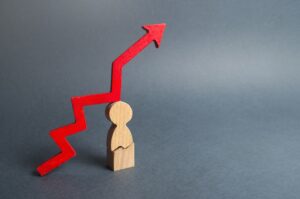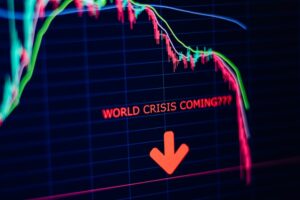Introduction
Debt is a common part of many people’s lives. Whether it’s a mortgage, a car loan, or credit card debt, most individuals will carry some form of debt at some point. However, not all debts are created equal. Some debts are secured, while others are unsecured. Understanding the difference between the two is crucial for managing your finances effectively and making informed decisions about borrowing.
Secured Debt
Secured debt is debt that is backed by collateral. Collateral is an asset that the borrower offers to the lender as a form of security. This collateral acts as a guarantee for the lender that they will be repaid. If the borrower fails to repay the debt, the lender has the right to seize the collateral and sell it to recoup their losses.
Examples of secured debt include mortgages, car loans, and home equity loans. When you take out a mortgage to buy a home, the home itself serves as collateral. Similarly, when you finance the purchase of a car, the car itself acts as collateral. If you default on your mortgage or car loan, the lender can foreclose on your home or repossess your car.
There are both pros and cons to secured debt. On the positive side, secured debt often comes with lower interest rates compared to unsecured debt. This is because the lender has the added security of collateral, reducing the risk they face. Additionally, secured debt can allow individuals to make large purchases, such as buying a home, that they may not otherwise be able to afford.
However, there are also risks associated with secured debt. The most significant risk is the potential loss of collateral. If you default on your loan, you could lose your home, car, or other assets that were used as collateral. This can have serious consequences for your financial well-being.
Unsecured Debt
Unsecured debt, on the other hand, is not backed by collateral. Instead, lenders rely on the borrower’s creditworthiness and promise to repay the debt. Examples of unsecured debt include credit card debt, personal loans, and medical bills.
Because unsecured debt does not have the added security of collateral, lenders often charge higher interest rates to compensate for the increased risk. Additionally, unsecured debt is typically more difficult to obtain, as lenders are more cautious when lending money without collateral.
One of the main advantages of unsecured debt is that it does not put your assets at risk. If you default on an unsecured loan, the lender cannot seize your property. While this may seem like a positive, it is important to note that defaulting on unsecured debt can still have serious consequences for your credit score and financial future.
The Risks Involved
Both secured and unsecured debt come with risks, but the level of risk differs for borrowers and lenders.
For borrowers, the risk of secured debt lies in the potential loss of collateral. If you fail to make your payments, you could lose your home, car, or other valuable assets. This can have long-lasting consequences and make it difficult for you to obtain credit in the future.
On the other hand, the risk of unsecured debt is primarily financial. Defaulting on unsecured debt can damage your credit score and make it more challenging to borrow money in the future. Additionally, lenders may take legal action to collect the debt, which can result in wage garnishment or other legal consequences.
For lenders, the risk of secured debt is relatively low. If a borrower defaults, the lender can seize the collateral and sell it to recover their losses. However, there is still some risk involved, as the value of the collateral may not fully cover the outstanding debt.
The risk of unsecured debt for lenders is higher. Without collateral to secure the loan, lenders rely solely on the borrower’s promise to repay. If the borrower defaults, the lender may have to write off the debt as a loss.
Strategies for Financial Well-Being
Managing secured and unsecured debt responsibly is crucial for maintaining your financial well-being. Here are some strategies to consider:
1. Paying on time: Whether you have secured or unsecured debt, paying your bills on time is essential. Late payments can negatively impact your credit score and make it more difficult to obtain credit in the future.
2. Avoiding excessive borrowing: It’s important to borrow only what you can afford to repay. Taking on too much debt can lead to financial stress and put your assets at risk.
3. Developing a repayment plan: If you’re struggling to make your debt payments, it’s important to reach out to your lenders and develop a repayment plan. Many financial institutions, such as Chase Bank, offer assistance programs to help borrowers manage their debt.
4. Seeking professional advice: If you’re feeling overwhelmed by your debt, consider seeking advice from a financial advisor or credit counselor. These professionals can help you develop a plan to pay off your debt and improve your financial situation.
Conclusion
Understanding the difference between secured and unsecured debt is crucial for managing your finances effectively. Secured debt is backed by collateral, while unsecured debt is not. Both types of debt come with risks, but the level of risk differs for borrowers and lenders.
To maintain your financial well-being, it’s important to manage both types of debt responsibly. This includes paying your bills on time, avoiding excessive borrowing, and developing a repayment plan if needed. Seeking professional advice can also be helpful if you’re feeling overwhelmed by your debt.
By understanding the difference between secured and unsecured debt and implementing these strategies, you can take control of your financial future and work towards a debt-free life.







